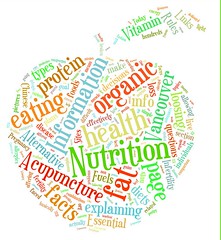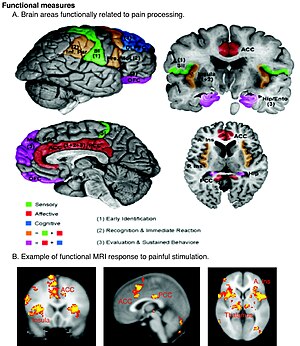"Miracle Foods" – Can They Decrease the Risk of Cancer?
 |
| Nutrition (Photo credit: Susan von Struensee) |
(From: Routledge, A Member of the Taylor & Francis Group www.tandfonline.com)
Reality Check: There is No Such Thing as a Miracle Food, published in Volume 65, Issue 2 2013 of Nutrition and Cancer: An International Journal, is a commentary written by the University of Minnesota's Maki Inoue-Choi, Sarah Oppeneer, and Kim Robien that calls on both researchers as well as media sources to consider the validity of multiple studies as opposed to singular studies before assuming that media information is factual.
"Nutritional scientists and epidemiologists should be cognizant of the public health messages that are taken away from their individual studies and not sensationalize the findings or contribute to the media frenzy around a single study," the authors believe.The authors mention two separate studies that theorize a decreased risk of ovarian cancer due to flavonoids in red onions and omega-3 in sea bass. Both of these studies were reported as fact on a popular television talk show. The authors assert that with further research, three other studies would have been found that can disprove the findings reported as true.
"The public needs more information about the effect of diet as a whole on cancer risk, as well as the importance of achieving and maintaining an ideal body weight, regular physical activity, and avoiding a sedentary lifestyle," the authors wrote.
*FREE ACCESS - Reality Check: There is No Such Thing as a Miracle Food
Abstract:
"A recent episode of the Dr. Oz Show suggested endive, red onion, and sea bass as foods that can decrease the risk of ovarian cancer by up to 75%. However, the scientific evidence supporting these recommendations is limited. This commentary discusses some of the concerns related to the promotion of “miracle foods” by the media. Nutritional scientists and epidemiologists should be cognizant of the public health messages that are taken from their individual studies and not sensationalize the findings of a single study."
About Nutrition and Cancer: An International Journal
Nutrition and Cancer: An International Journal reports on current research and findings relative to the effects of nutrition on the etiology, therapy, and the prevention of cancer. The Journal presents original papers by experts around the world.
EDITOR: Leonard A. Cohen
2.783 Impact Factor (© 2012 Thomson Reuters, 2011 Journal Citation Reports®)
Print ISSN: 0163-5581 • Online ISSN: 1532-7914
Volume 65, 2013, 8 issues per year
www.tandfonline.com/HNUC
Read more...


























